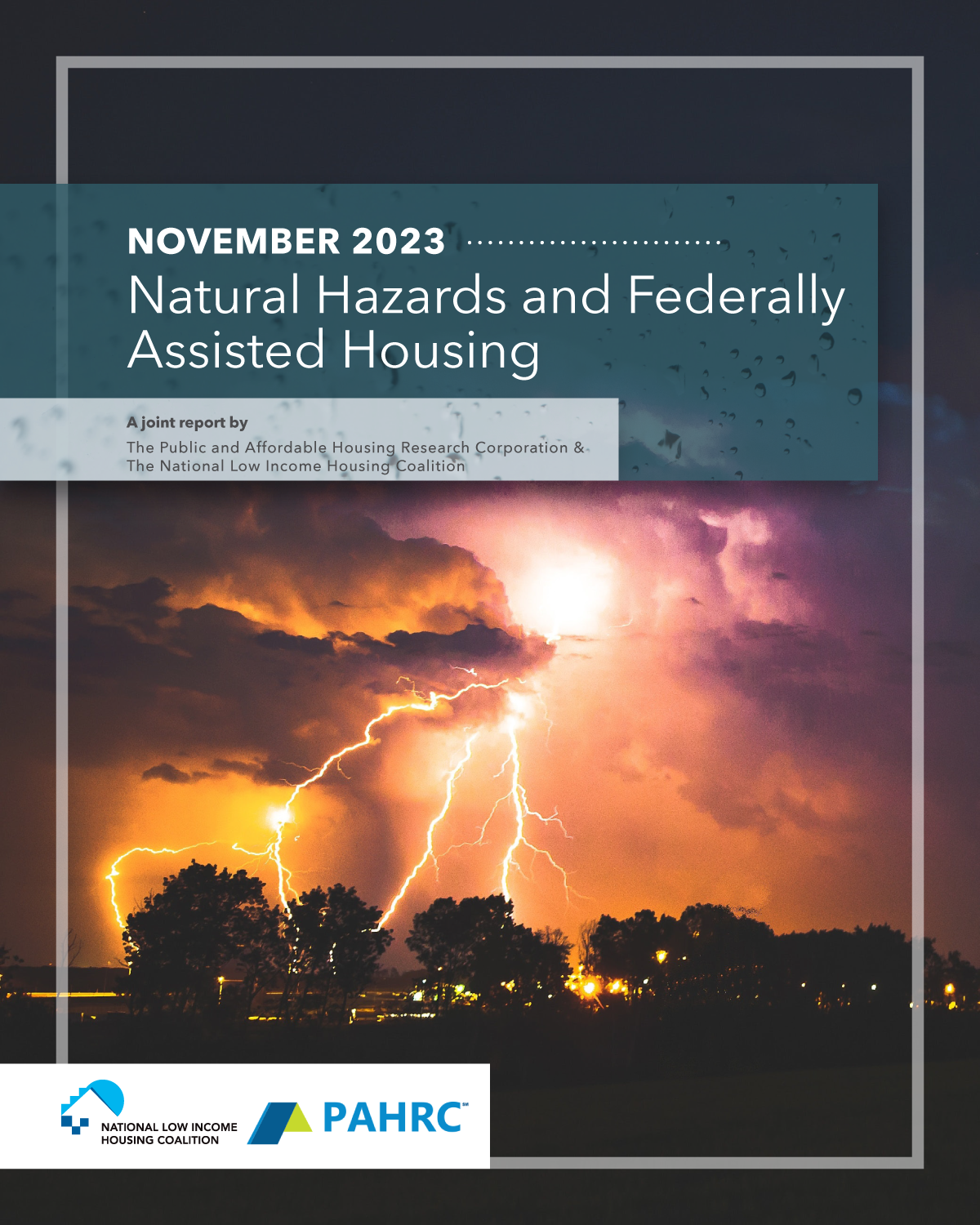NLIHC and the Public and Affordable Housing Research Corporation (PAHRC) released today a new report, Natural Hazards and Federally Assisted Housing. The report analyzes the risks posed by natural hazards to federally assisted housing and its residents using the Federal Emergency Management Agency’s (FEMA) National Risk Index (NRI). Among other findings, the report reveals that nearly a quarter of federally assisted homes are in census tracts with the greatest risk of negative impacts from natural hazards, and that heat waves are the most prevalent natural hazard threatening residents of federally assisted homes.
Accounting for approximately 10% of the nation’s rental housing, federally assisted housing is a limited but critical resource for the lowest-income renters, who disproportionately struggle with housing costs. Increasingly frequent and severe weather events pose a growing threat to federally assisted housing and its residents, who are often the least prepared to respond to and recover from disasters.
By analyzing natural hazard risks using FEMA’s NRI and data from the National Housing Preservation Database, the report finds that 24% of federally assisted homes are in census tracts with the greatest risk of negative impacts from natural hazards nationwide. In eight states, more than half of federally assisted homes are in census tracts with the greatest risk of negative impacts.
Heat waves are the most prevalent hazard threatening residents of federally assisted homes, according to the report. Twenty-eight percent of federally assisted rental homes are in census tracts with the greatest risk of losses from extreme heat. Meanwhile, 25% of federally assisted rental homes are in census tracts with the greatest risk of losses from tornadoes, and 23% are in census tracts with the greatest risk of losses from riverine flooding.
The report makes several recommendations about how to better protect federally assisted housing from the impacts of natural hazards. In general, greater resources for mitigation and better recovery planning are needed at all levels of government. At the federal level, Congress should pass the bipartisan Reforming Disaster Recovery Act, which would permanently authorize the Community Development Block Grant-Disaster Recovery (CDBG-DR) program and thereby expedite the allocation of federal recovery funds while also prioritizing one-for-one repair or replacement of federally assisted housing impacted by disasters.
